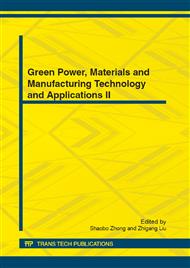p.882
p.887
p.893
p.898
p.903
p.909
p.914
p.919
p.924
M Optimized Multi Virtual Gravity
Abstract:
A popular hypothesis regarding legged locomotion is that humans and other large animals walk and run in a manner that minimizes the metabolic energy expenditure for locomotion. Here, we just consider the walking gait patterns. And we presented a hybrid model for a passive 2D walker with knees and point feet. The dynamics of this model were fully derived analytically. We have also proposed optimized virtual passive control laws This is also a simple and effective gait-generation method based on this kneed walker model, which imitates the energy and torque behaviors in every walking cycle. Following the proposed method, we use computer optimization to find which gaits are indeed energetically optimal for this model. We prove some walking rules maybe true by the results of simulations and experiments on the existing walking robot.
Info:
Periodical:
Pages:
903-908
Citation:
Online since:
November 2012
Authors:
Keywords:
Price:
Сopyright:
© 2012 Trans Tech Publications Ltd. All Rights Reserved
Share:
Citation:


